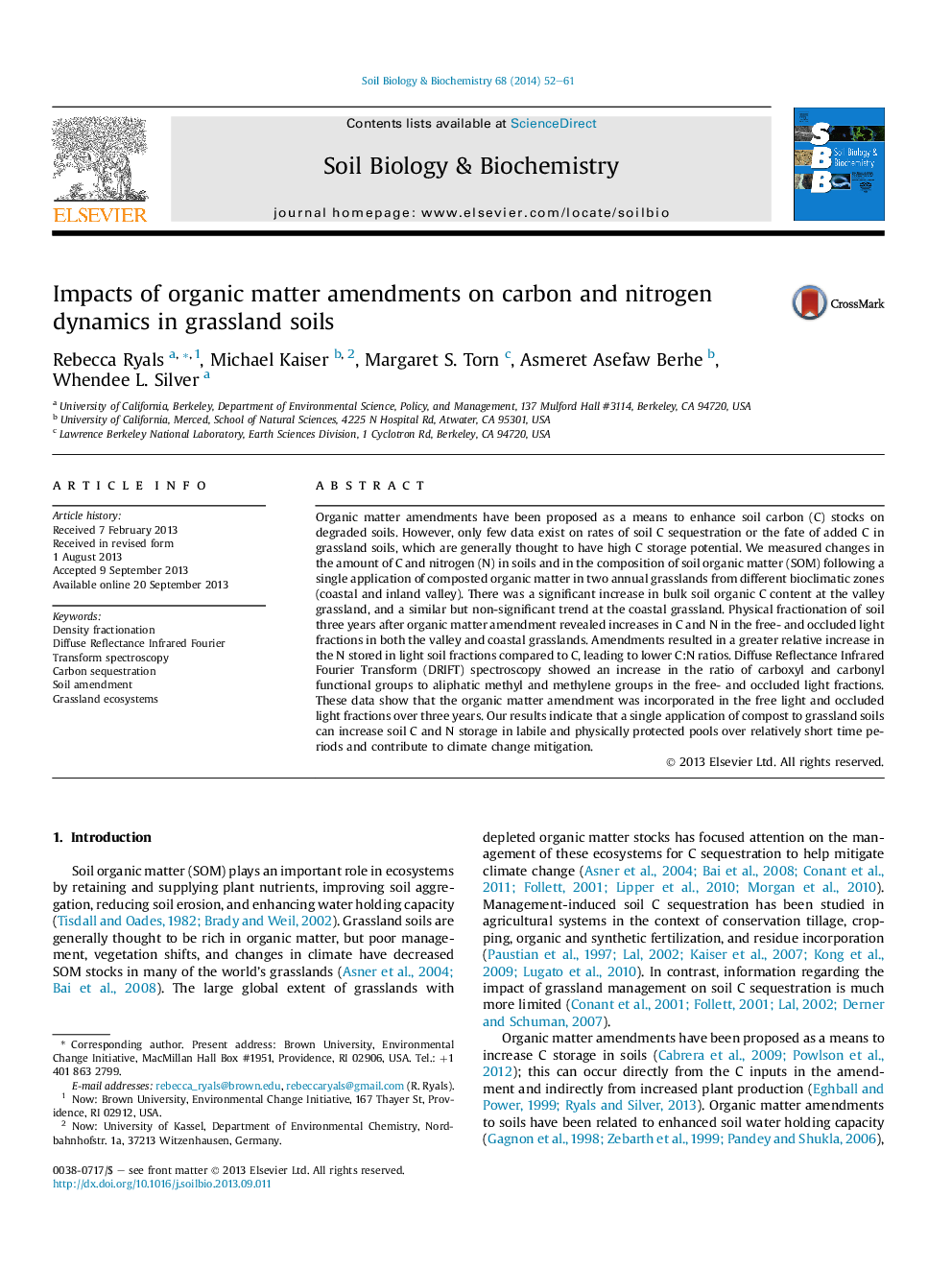| Article ID | Journal | Published Year | Pages | File Type |
|---|---|---|---|---|
| 8364968 | Soil Biology and Biochemistry | 2014 | 10 Pages |
Abstract
Organic matter amendments have been proposed as a means to enhance soil carbon (C) stocks on degraded soils. However, only few data exist on rates of soil C sequestration or the fate of added C in grassland soils, which are generally thought to have high C storage potential. We measured changes in the amount of C and nitrogen (N) in soils and in the composition of soil organic matter (SOM) following a single application of composted organic matter in two annual grasslands from different bioclimatic zones (coastal and inland valley). There was a significant increase in bulk soil organic C content at the valley grassland, and a similar but non-significant trend at the coastal grassland. Physical fractionation of soil three years after organic matter amendment revealed increases in C and N in the free- and occluded light fractions in both the valley and coastal grasslands. Amendments resulted in a greater relative increase in the N stored in light soil fractions compared to C, leading to lower C:N ratios. Diffuse Reflectance Infrared Fourier Transform (DRIFT) spectroscopy showed an increase in the ratio of carboxyl and carbonyl functional groups to aliphatic methyl and methylene groups in the free- and occluded light fractions. These data show that the organic matter amendment was incorporated in the free light and occluded light fractions over three years. Our results indicate that a single application of compost to grassland soils can increase soil C and N storage in labile and physically protected pools over relatively short time periods and contribute to climate change mitigation.
Keywords
Related Topics
Life Sciences
Agricultural and Biological Sciences
Soil Science
Authors
Rebecca Ryals, Michael Kaiser, Margaret S. Torn, Asmeret Asefaw Berhe, Whendee L. Silver,
